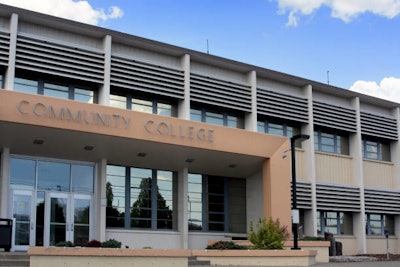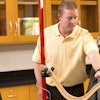For community college students, the path towards a degree has been compared to a shapeless river: unending, with no current pushing them forward. Confronted with a vast array of options, students get lost, failing to take classes that build towards a clear goal. Frustration builds, and many wind up dropping out, having invested precious funds into their education, but with nothing to show for it.

Guided Pathways had been adopted over 300 colleges by the fall of 2019, and early results have been promising.
“It’s incredibly influential,” said Dr. Frank Harris III, co-director of the Community College Equity Assessment Lab at San Diego State University.
However, despite the widespread interest from institutions, a new report from the CCRC shows that full implementation has been slow: the majority of colleges that it examined have failed to scale at least one practice from each of four groups making up the full set of reforms.
The report was based on surveys of 63 schools in Ohio, Tennessee, and Washington. Tennessee has been implementing Guided Pathways since the 2015-16 academic year, and Ohio and Washington have joined in more recently. This variety of timelines is reflective of the differences found across the country, according to Taylor Myers, a research associate at CCRC and a co-author of the report.Overall, the states were most likely to have established meta-majors and mapped their programs to career and transfer opportunities. But schools that had taken these steps weren’t collecting data about which paths their students were taking.
 Taylor Myers, research associate at Columbia University's Community College Research Center
Taylor Myers, research associate at Columbia University's Community College Research Center
Ways of supporting students on their paths, such as mandatory advising and tutoring, were less likely to be in place. Myers said that it made sense that schools might not have gotten to this step yet.
“There’s a fairly logical sequence that colleges will go through,” she said. “We know that it starts with organizing programs, but we know that it needs to get much deeper.”
The report pointed to one main reason that progress had been slow: the COVID-19 pandemic. According to Harris, this was to be expected.
“COVID required institutions to shift their focus from in-person instruction and support services to moving everything online in most states,” he said. “There had to be some investment of time, energy, and resources towards doing that, which meant that you had to take time, energy, and resources from another thing.”
Myers said that many schools had introduced a majority of the Guided Pathways practices, but not yet at scale.
“They might have implemented a practice for 50% of their students or 30% of their programs,” she said. “They had a goal to roll it out at the whole-college level that was directly impacted by COVID. In most cases, the work was underway, but COVID paused [it].”
Harris said that the pandemic stoppage might cause a loss of momentum. But Myers said that she was seeing the opposite.
“If anything, there is more interest and more excitement because COVID really laid bare some of the needs of students and what it takes to get them through a program successfully,” she said. “There is a ton of work happening to invest in the technical pieces of this work: the staffing, the data infrastructure, the coordination between faculty and administrative teams. The colleges we work with are not taking their foot off the gas.”
Although progress has been slow, Myers thought that the report had found much of which colleges should be proud.
“There has been a lot done on the ground not only to implement the processes in the Guided Pathways model, but to scale them,” she said. “This is something that takes a lot of time. This is not an overnight reform.”
Jon Edelman can be reached at [email protected]















